
Give a critical appreciation of the poem ‘To a Skylark’ My Exam Solution
To a Skylark By Percy Bysshe Shelley Hail to thee, blithe Spirit! Bird thou never wert, That from Heaven, or near it, Pourest thy full heart In profuse strains of unpremeditated art. Higher still and higher From the earth thou springest Like a cloud of fire; The blue deep thou wingest, And singing still dost soar, and soaring ever singest.

16.10.20 Critical appreciation & concluding lines of the poem To A Skylark by Shelley. B.A. pt
The song of the skylark heard by the poet on his trip to Italy triggered in him a series of emotions. He got reminded of how different the bird's songs were from that of the mortals. The lark's songs were a source of divine happiness whereas the sweetest songs of humans spoke of pain. "We look before and after and pine for what is not,
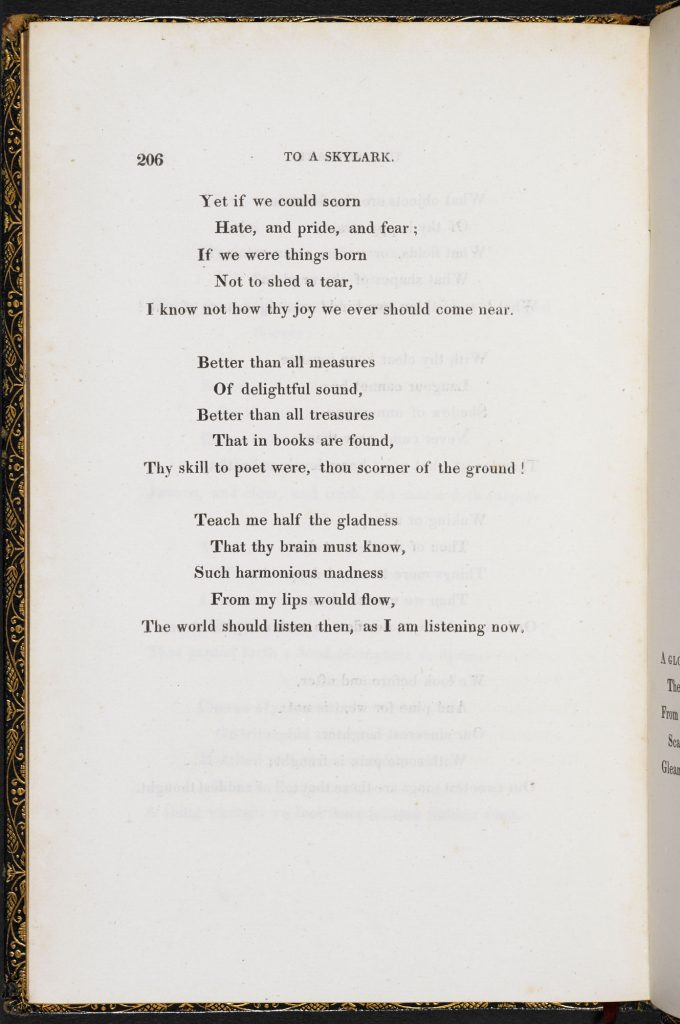
️ Ode to skylark poem. SparkNotes Shelley’s Poetry “To a Skylark”. 20190118
Poem Analyzed by Emma Baldwin B.A. English (Minor: Creative Writing), B.F.A. Fine Art, B.A. Art Histories This well-loved poem is a wonderful example of Percy Bysshe Shelley's writing. It uses numerous memorable images and a skillful collection of literary devices, especially when it comes to figurative language.

What is critical appreciation? Download Scientific Diagram
"To a Skylark" written in 1820 by P. B. Shelley is one of the greatest works of all time. It is about the flight of a real skylark. It is one of the wonders of English literature which celebrated numerous poems about birds that can be considered as signifiers of Romanticism. This poem is a tribute to a skylark.
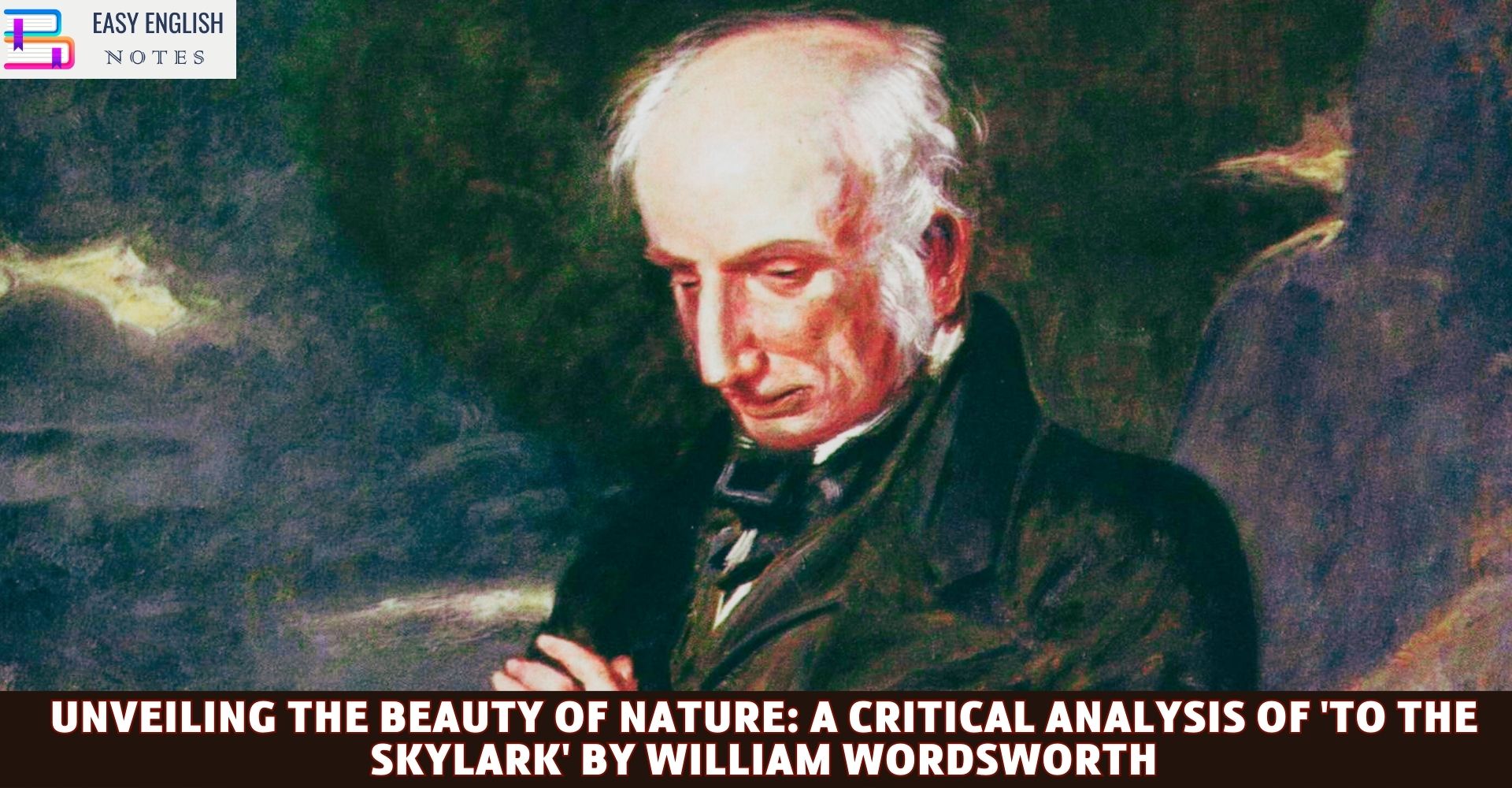
Unveiling the Beauty of Nature A Critical Analysis of ‘To the Skylark’ by William Wordsworth
Get LitCharts A +. One of Percy Bysshe Shelley's most famous poems, "To a Skylark" describes the powerful grace and beauty of the skylark's song. Shelley wrote "To a Skylark" in 1820 after hearing the bird's distinctive calls while walking through the port city of Livorno, Italy. The poem's speaker addresses the bird directly and praises the.

To The Skylark Summary of the Poem Composed by William Wordsworth YouTube
Central Thought of this poem: The subject-matter of To a Skylark' is the glorification of a little bird of nature, the skylark. Shelley considers the bird a spirit divine. He finds in it the greatest inspiration for human life. The skylark possesses all that man has not. It is gifted with a penetrating insight into the mystery of life and death.

What Is A Critical Appreciation Of Poem
"To a Skylark" is Shelley's romantic ode to a small songbird he believed embodied joy and happiness. The skylark's song surpasses all music; it is a divine expression, an ideal beyond the reach of humans, who know happiness only through sadness.
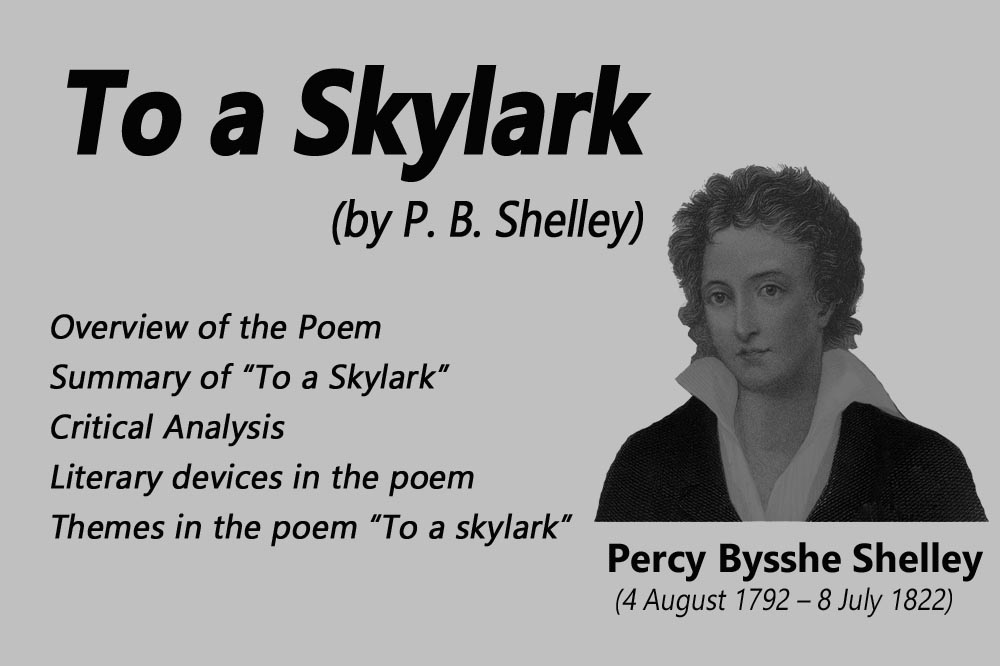
Summary and Analysis of “To a Skylark” by P. B. Shelley Literary English
To a Skylark Hail to thee, blithe Spirit! Bird thou never wert, That from Heaven, or near it, Pourest thy full heart In profuse strains of unpremeditated art. Higher still and higher From the earth thou springest Like a cloud of fire; The blue deep thou wingest, And singing still dost soar, and soaring ever singest. In the golden lightning

How to write ' CRITICAL APPRECIATION' ? YouTube
To a Skylark Summary. "To a Skylark" doesn't exactly have a plot. You might want to think of it more like a bunch of observations about a single idea—a stretched-out description of the song of a bird. The poem opens up with the speaker calling out to a bird (which he calls a "Spirit"). He tells the bird how much he loves its singing.
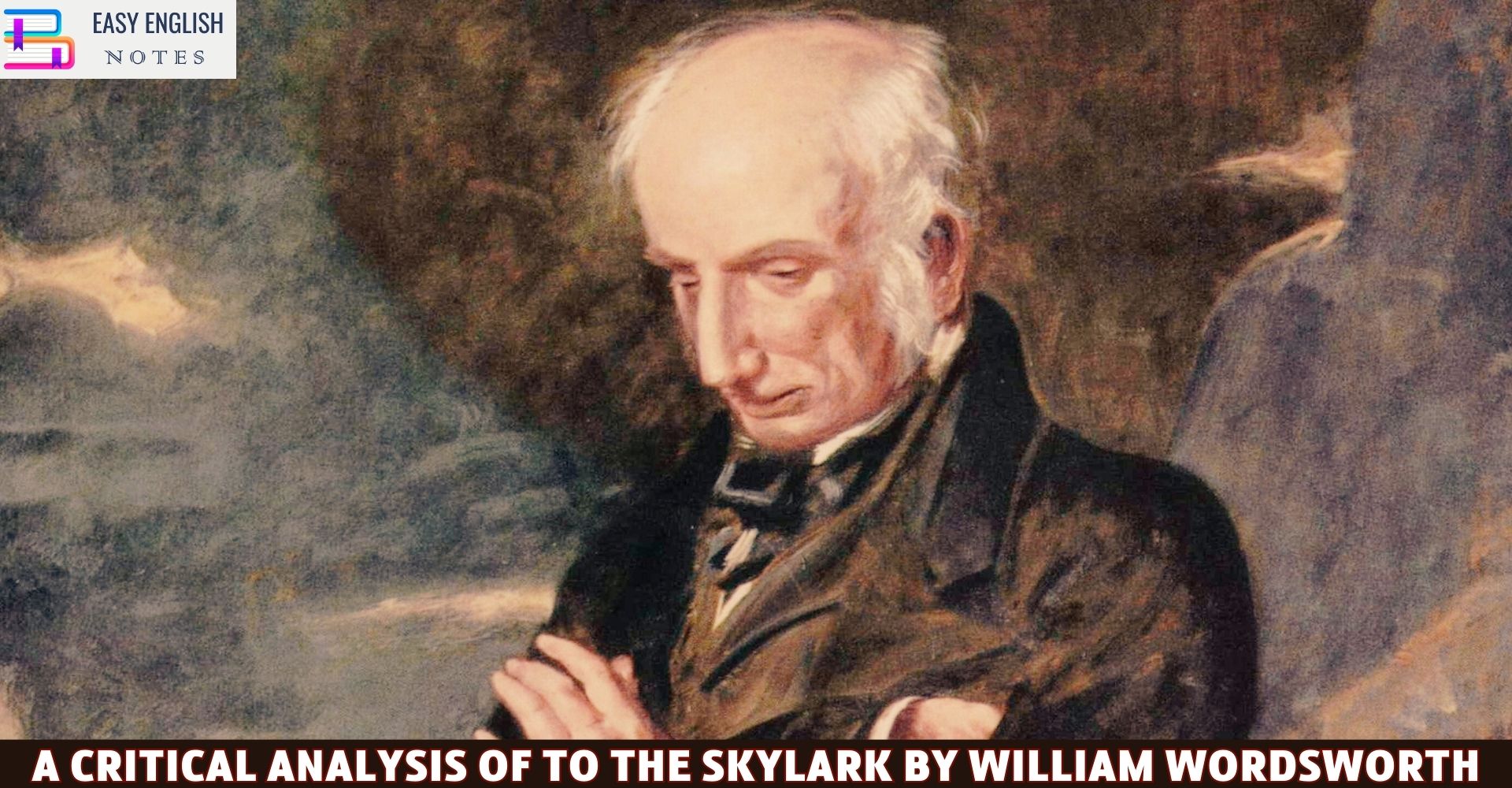
A Critical Analysis of To the Skylark by William Wordsworth
Home Literature Notes Shelley's Poems To a Skylark Summary and Analysis To a Skylark Summary A skylark soars into the sky singing happily. As it flies upward, the clouds of evening make it invisible, but its song enables the poet to follow its flight. All the earth and air is filled with its song.

What is critical appreciation? Download Scientific Diagram
"To a Skylark": Critical Appreciation In the poem 'To a Skylark' Shelley addresses a skylark that soars up at a great height and sings so sweetly that the world is enchanted and bewitched by its sweetness. The skylark symbolizes many things.
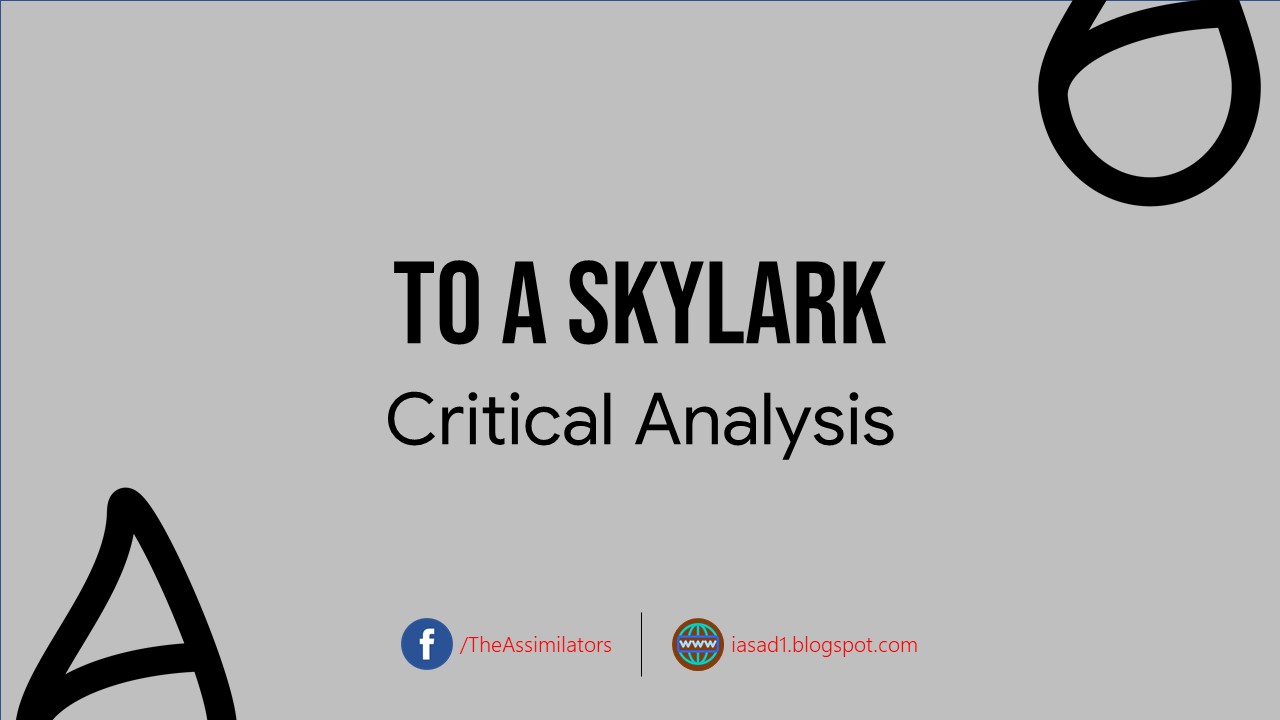
Critical Appreciation To a Skylark PB Shelley Asad Imran Notes The Assimilators
Buy Study Guide Percy Shelley: Poems Summary and Analysis of "To a Skylark" The persona extols the virtues of the skylark, a bird that soars and sings high in the air. It flies too high to see, but it can be heard, making it like a spirit, or a maiden in a tower, or a glow-worm hidden in the grass, or the scent of a rose.

PPT Introduction to Critical Appreciation PowerPoint Presentation, free download ID206197
P. B. Shelley, the supreme lyricist in the romantic period always longs for something ethereal, something that is far beyond the 'sphere of sorrow'.His 'To a Skylark' is, as Wordsworth puts in "the expression of the highest to which the poet's genius has attained". It is one of the "most marvelous of English lyrics" ever written. It is the expression of a genius who sings.

B.A. 2nd, English Lit. Paper 2nd, To the Skylark Critical Appreciation YouTube
"To a Skylark" is a poem written by Percy Bysshe Shelley in June 1820. It consists of twenty-one five-line stanzas. The stanzas each consist of four lines of iambic trimeter followed by a line of.
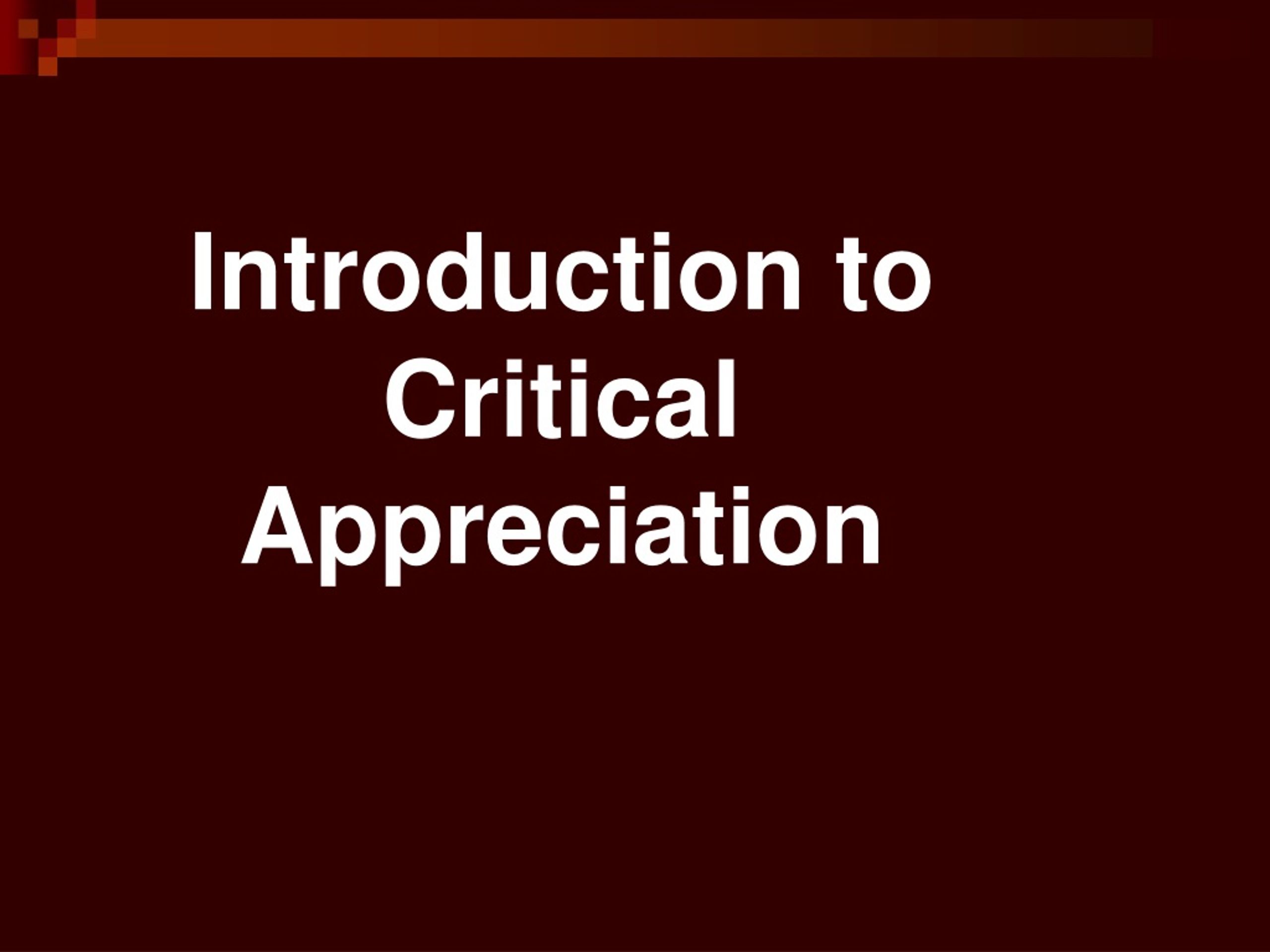
PPT Introduction to Critical Appreciation PowerPoint Presentation, free download ID206197
"To a Skylark" Summary The speaker, addressing a skylark, says that it is a "blithe Spirit" rather than a bird, for its song comes from Heaven, and from its full heart pours "profuse strains of unpremeditated art." The skylark flies higher and higher, "like a cloud of fire" in the blue sky, singing as it flies.

Hopkins Sea And Skylark critical appreciation & chiastic effect Archives VK Study
"To a Skylark" is a masterful composition, crafted by the hands of the literary genius, Percy Bysshe Shelley. This esteemed piece of poetry was first published in the year 1820 and has since earned its place among the pantheon of Shelley's most prized works.